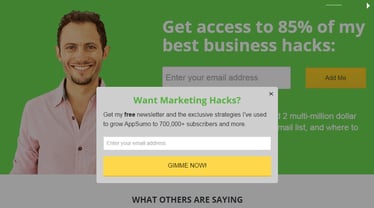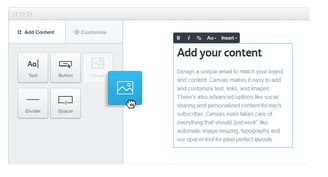Systems, Tactics & Processes for EMAIL

Love it or loathe it, email is a central part of consumers' virtual lives - despite other channels competing for their attention (e.g. search and social). Enterprises that don't recognize email's enduring importance to business and marketing operations are simply, inevitably, doomed to digital failure.
With the right systems, tactics and processes in place, and by keeping a keen eye on industry trends, email can be used to develop a more robust presence on the Web and put any brand on the fast track to 'Net success. The practice of email is changing, evolving and maturing in a way that now presents brands an incredibly powerful (yet increasingly challenging) communication opportunity.
THE STATE OF EMAIL TODAY
A new report from Yesmail reveals that the volume of email sent and received is growing but open rates are declining. Don't worry, there's a good reason.
The number of emails arriving in subscribers' inboxes, according to Yesmail's study, increased by 9 percent between Q2 2013 and Q2 2014, yet the overall email open rate declined 3 percent during the same period, most likely because of the added volume of messages. The good news, however, is that the number of opens for each active subscriber increased 6 percent year-over-year (YOY). Essentially, even though recipients are getting more email, the more engaged members of an audience are opening more emails than ever before and making a positive impact on the bottom line of today's businesses (see the "Mobile Email Stats to Know" sidebar).
What this means is that the savviest marketers are establishing the right strategies, sending to the right users, and taking advantage of techniques and tactics (many of which readers will discover through Website Magazine's feature article) that are driving opens, brand loyalty, website traffic and conversion.
The evidence is clear - email is an effective way to retain and engage users, and bring potential buyers (and even existing clients) who are hesitant to engage one step closer toward conversion. That's good news for today's digital enterprises.
MarketingSherpa recently found that companies sending more than 100,000 emails per month see a 94 percent return on investment. What more proof does any enterprise need that email is far and away the best performer in terms of revenue generation (not to mention deepening engagement and loyalty)? MarketingSherpa also found that companies sending less than 100,000 emails per month see a 139 percent return, so don't think for a digital moment that the size of an existing audience has anything to do with the ability to leverage the channel for the good of an enterprise.
What's important about email marketing is that it becomes part of business and marketing operations. Establishing goals (e.g. increase sales from email, reduce cart abandonment) is important as it provides a general direction, but marketers may be surprised at how well-designed and thoughtful systems and processes related to email can take it a step further and are what will separate a digital business from its competition. Before hitting send however, it is essential a brand has the right strategy and software in place for its audience's needs.
Mobile Email Stats to Know
- Email opens on mobile devices accounted for 64.5 percent of opens in Q2 2014, compared with just 35.5 percent on desktops.
- Mobile devices accounted for just 35 percent of all email clicks-a 9 percent increase YOY but much less than the overall share of opens.
- The average mobile click-to-open (CTO) rate increased YOY (reaching 9.3 percent in 2Q14) but lags the desktop average CTO rate of 22.6 percent.
- Mobile transactions accounted for 22 percent of all purchases driven by email in Q2 2014, a 40 percent YOY increase.
- Although the number of mobile orders jumped YOY, the revenue associated with these purchases only increased by 10 percent.
STRATEGY & SOFTWARE SOLUTIONS
There are three types of enterprises on the Internet today; information publishers, service providers and ecommerce merchants (sometimes there's some overlap, e.g. an online merchant that regularly produces content-driven marketing materials).
The type of business engaged in (e.g. hospitality, auto sales) will, of course, greatly determine an email strategy. In turn, a business's strategy influences the software solution selected to power email initiatives - as each niche has different email demands.
An online merchant, for example, selling thousands of products each week may discover that metrics for shopping cart abandonment are on the rise, but with a limited content marketing budget, he or she may decide that a strategy focusing on transactional emails and prompting return visits may be the best course of action. The merchant, however, will need the "right" email solution to support these efforts. Learn how to align your go-to-market strategy with an email solution that supports it.
OBJECTIVES & MESSAGING SEQUENCE
Those willing to increase their use of email would, of course, be remiss not to have an initial strategy in place, a plan of action designed to achieve a very specific aim.
Information publishers, for example, may want to consider developing longer form content for private distribution; while online merchants may want a way to add "cart abandoners" to a special list to incentivize conversion. The problem becomes, what's really going to motivate a user and what is the best sequence of messages to make it work?
Triggered messages-such as abandoned shopping cart and welcome emails-had a 2.5x higher average open rate in Q2 2014 compared with general campaigns (38.9 percent versus 15.1 percent) according to the previously mentioned Yesmail report. Triggered messages also had a 2x higher average unique click rate compared with general campaigns (3.4 percent versus 1.7 percent). Fortunately, solutions abound to support brands use of this messaging strategy.
Enterprise-level marketing automation platform Iterable, for example, recently launched Workflows, a new feature that enables users to create and "A/B" test "multi-pronged" email campaigns to determine which message series works best for generating and maximizing conversions (and revenue, of course).
"Iterable already has a built-in tool for A/B testing any part of an email," said Justin Zhu, CEO of Iterable. "Naturally, the next step was to create the ability to A/B test different series of emails. Traditional drip campaign builders can only create linear workflows with no ability to skip certain steps or to test different flows to see which is the most effective. We decided to fill that gap to help make email simpler and more effective for marketers."
Workflows provides a drag-and-drop editor for designing drip campaigns, which are initiated by a trigger such as a newsletter sign-up, shopping cart update, purchase or other custom event. Users can even add in-time delays and filters, ensuring that only those subscribers who fulfill certain criteria will move on to the next step. In addition, Workflows even includes a few built-in safeguards such as automatically preventing subscribers from entering a drip campaign more than once or being sent too many emails within a two-hour period.
With a clear objective and the right systems in place, brand marketers may still need some inspiration for their message sequences.
5 Tools, Tactics to Get More Email Sign-Ups
Discover time-tested strategies to grow your email list (and close more digital deals)
DELIVERABILITY & THE MODERN INBOX
Those working on the Web one decade ago, probably remember how "different" email marketing was. There was much more "batch and blast" and far less regard for the user experience (particularly when it comes to managing unsubscribes/opt-outs).
In the past few years, however, the Web community has embraced personalization and segmentation, as well as prioritized the quality of their list over the quantity of recipients. It has made companies smarter, more efficient, more productive and in general, more successful, but there's still room for improvement in enterprises' email initiatives.
The Online Trust Alliance (OTA) recently released results of an audit of which ecommerce sites were enabling consumers to opt out of email lists. Upward of 70 percent of the top 200 online retailers have moved beyond compliance (just following the rules) and are demonstrating a commitment to users' control of their inbox according to the OTA. That's great news and a big increase from many years ago, but there is still a long way to go. The OTA found that 10 percent of the retailers were currently in direct violation of the U.S. CAN-SPAM Act of 2003 and Canada's new Anti-Spam Legislation.
"Despite CAN-SPAM taking effect 10 years ago, it is disappointing that a number of the world's biggest online retailers have yet to get things right," said Craig Spiezle, executive director and president of OTA. "On the positive side, the vast majority of email marketers are doing their part to distance themselves from spammers and thus fortify their customer relationships. Now is the time for others to follow their leadership."
Discover four reasons your email just isn't getting through to its target.
LIST BUILDING CHALLENGES
To grow a digital audience it's necessary to be somewhat aggressive in acquisition efforts. Not all enterprises, however, are doing all they can when it comes to getting users in the virtual door. Luckily, there's myriad tools, techniques and tactics to aggressively grow a marketing database.
One of the more accessible solutions is SumoMe, a collection of free apps designed specifically to help businesses increase website traffic - in both the short and long term. The apps can be integrated through HTML or with SumoMe's WordPress plugins. Apps for content sharing, list building, lead generation, image sharing, scroll boxes and a smart bar (a sticky/static email subscription form) are currently available. Those apps focused on email collection, however, are those that will catch the attention of digital marketers as they offer an effective way to acquire subscribers and build a list.
SumoMe's Scroll Box displays (slides in) an email sign-up form at a pre-defined point on a Web page, and the Smart Bar provides a static, "sticky" email subscription form that stays at the top of the page until closed by the user. SumoMe's List Builder offers up a more aggressive approach to acquisition. The lightbox popover (see image) that can be customized to show after a certain amount of time, works with MailChimp, AWeber, Constant Contact and Campaign Monitor.
Where SumoMe really shines is its ability to show just how well this more aggressive approach to traffic acquisition is working. The service not only helps websites collect user information and encourages greater social participation, but it also tracks performance. In the case of the Smart Bar for example, SumoMe shows the number of subscribers acquired, the number of times it was shown and even provides the conversion rate.

Quickly integrated with any WordPress theme, SumoMe's List Builder gives brands total control over the design and timing of their newsletter popover, which is proven to increase email subscriptions.
CONTENT & ENGAGEMENT
For anyone sending email, content is ultimately going to take center stage - but it needs to be the "right" content to make a difference to a brand's bottom line.
Marketing and sales automation platform Autopilot and cloud analytics provider GoodData recently aligned forces to help enterprises improve their sales teams' prospecting efforts with the launch of CoPilot. The partnership helps sales teams understand performance of drip email campaigns, so they camake informed decisions and ultimately drive better results from what traditionally have been much larger data sets.
GoodData, embedded in CoPilot's user interface, will provide customers the ability to receive an on-demand view into how prospects interact with outbound email campaigns, gain insight into what makes an effective and engaging email campaign, understand which messages resonate most with each persona, view email campaign performance (including click rates, open rates and clicks per unique open), and track high-value metrics like most-engaged prospects or best-performing campaigns.
THE DESIGN ISSUE
Email continues to be a dominant force for marketers as trillions of emails are sent and received every day. However, in order for marketers to set themselves apart from the competition they need to design a visually appealing and timely message, something that can be difficult to accomplish. Luckily, there are products out there to help marketers solve this problem.
MailUp, an email service provider, recently announced the launch of a new product called BeeFree, a free online version of MailUp's drag-and-drop editor. Through the BeeFree email editor, users will be able to create fully responsive emails without having to actually code any HTML or CSS themselves, which will enable email marketers to quickly, and visually, create attractively designed and, more importantly, functional emails. Furthermore when creating a message in BeeFree email marketers have the option of using a template or starting from scratch and creating a completely original design.
"We decided that taking the email editor out of MailUp and making it a stand-alone product that anyone can use was the right strategy," said Massimo Arrigoni, chief product officer at MailUp. "It will allow us to collect feedback and push development forward, while also giving the email community a cool tool that will help marketers design nice email messages with little effort."
MailUp's BeeFree is far from the only solution to which marketers can turn if their design isn't meeting users' expectations. Email marketing platform Campaign Monitor released Canvas mid-summer 2014, a new email builder tool that rethinks the approach to layout and styling of branded content delivered to the inbox.
Canvas offers designers/email senders an opportunity to choose the style of email that matches their brand, and then provides the ability to customize how content is laid out as it is added by the designer. Canvas also features automatic image resizing and features a tool to quickly and easily create additional vertical space.
Campaign Monitor is making it possible for content to "inform the design" of email - not the other way around. As the number of emails opened on mobile devices continues to increase, Internet professionals would be wise to explore automated, customizable solutions like that of Canvas.
"Quickly creating an email that looks fantastic everywhere has always been a huge challenge, and traditionally template builders have really limited what you can do with your design," said Campaign Monitor Co-Founder David Greiner. "With Canvas, we focused on developing a whole new way of creating emails. We wanted the content to come first, not the limitations of a template."
Review Website Magazine's "List of Email Design Tools."

With Canvas from Campaign Monitor, users can choose from a range of designs with flexible layouts to create emails that will work everywhere.
TARGETING/PERSONALIZATION
A survey conducted by Harris Interactive found that people actually like emails based on their previous shopping behaviors and preferences. In fact, 81 percent of U.S. digital shoppers surveyed said they were at least somewhat likely to make additional purchases, either online or in a store, as a result of targeted emails - and solutions providers are getting in on the action.
Email marketing automation provider dotmailer, for example, has released a series of updates to its Magento extension designed to help retailers drive engagement and loyalty.
The updated plugin most notably offers retailers the ability to integrate ecommerce customer data with email marketing data (dotmailer functionality is essentially made available directly within the Magento console), enabling retailers to create email marketing campaigns, administer contacts and design automation programs within the same environment as they manage their merchant functions.
Magento and dotmailer users that deploy the module/plugin also gain access to a full suite of transactional emails, as well as the ability to build loyalty programs thanks to an integration with rewards platform SweetTooth.
"These latest developments will transform the way some of the world's top retailers do business," said Ben Staveley, head of ecommerce at dotmailer. "The seamless transfer of data between the Magento and dotmailer platforms will bring users increased average order values, increased frequency of purchase and ultimately enhanced revenue."
REVENUE GENERATION
Ecommerce merchants and service providers have a direct path to generating revenue - get consumers to buy products (that's not easy, of course, but is made much more so by the sophistication of technology today). It's much different for information publishers, who are looking for ad serving solutions that will provide them a better opportunity than ever before, to make email the revenue workhorse of their enterprise.
ReachDynamics, for example, recently released a new ad serving technology, which allows publishers to dynamically place contextually targeted ads in transactional and marketing emails such as weekly newsletters, confirmation emails, receipts and autoresponders, by leveraging multiple demand side platforms on a cost-per-click (CPC) basis.
The solution works by scanning the content of email in real-time and serving contextually relevant ads to recipients. Publishers can customize the color, dimensions and placement of the ads, as well as specify advertising categories that can appear. ReachDynamics indicated that it has already completed several integrations with email service providers.
Those questioning whether a solution like this would impact deliverability, can join the digital club. Typically, email clients don't like too much in the way of dynamic scripting but only time will tell, as the potential in a solution like this is almost too good to pass up for publishers.
"We recognized a huge opportunity to help publishers uncover the hidden revenue potential of their email programs," said Eric Castelli, CEO and co-founder of ReachDynamics. "Because the email subscriber relationship has so much long-term value, it's important for us to serve complement and relevant ads that don't detract from the user experience. For example, a newsletter reviewing the top 10 chef knives might provide an ad for cooking classes. The best part about our technology is that it is not static; it continually optimizes to improve ECPM, engagement levels and the customer experience."
ONLY AS GOOD AS THE MARKETER
Having the right email systems and processes in place can certainly propel a digital enterprise forward. After all, email is responsible for generating revenue, deep customer loyalty and personalizing the brand experience.
All of email's digital promises, however, will not be delivered if those responsible for email marketing within their company are not open to emerging software solutions and strategies, more compelling creative and cutting-edge monetization opportunities. Staying abreast of all the challenges and changes in email marketing is what will truly deliver email marketing success.










